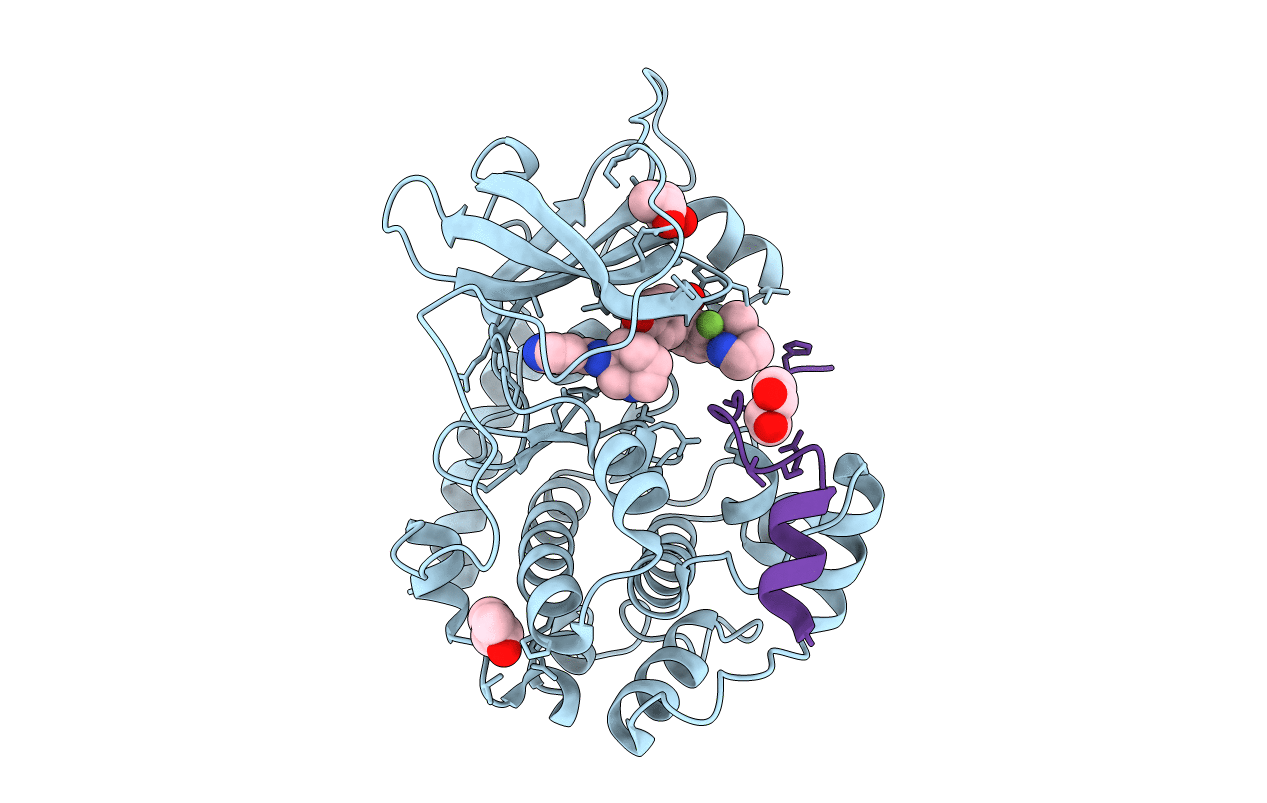
Deposition Date
2004-09-17
Release Date
2005-09-17
Last Version Date
2024-10-16
Entry Detail
PDB ID:
1XH5
Keywords:
Title:
Crystal Structures of Protein Kinase B Selective Inhibitors in Complex with Protein Kinase A and Mutants
Biological Source:
Source Organism:
Bos taurus (Taxon ID: 9913)
synthetic construct (Taxon ID: 32630)
synthetic construct (Taxon ID: 32630)
Host Organism:
Method Details:
Experimental Method:
Resolution:
2.05 Å
R-Value Free:
0.23
R-Value Work:
0.18
R-Value Observed:
0.18
Space Group:
P 21 21 21


